
Elinor Morgan is lucky – her face perfectly reflects the kind of person she is; warm, generous, kind, considerate and thoughtful. She radiates positivity and optimism, and is a real pleasure to work with and fun to be with. She attracts good people, with a great ethos, that make great work.
She is a champion of artists, audiences and creating extraordinary things for everybody, everywhere. She believes in situating artists, learning, critical reflection and dialogue at the front and centre, exemplified in her work at MIMA, Eastside Projects, Wysing Arts Centre and Outpost gallery.

I believe that public art institutions must create the spaces and conditions for people to come together and make new understandings of the world. They should be places for imagining and enacting social change to creatively address our perils and crises. That’s why I do what I do.''
Please note this interview was first published on the Artist Mentor website during 2020.
I like the vibe of the things she creates, and the commitment she demonstrates to making colourful things resonate and sing, in a thoughtful and determined way. If I could, I’d travel to see her work more often as it’s always curious and compelling.
Elinor Morgan is Head of Programme at MIMA, Middlesbrough Institute of Modern Art. Since 2008 she has curated residencies, exhibitions, public projects and education programmes across the UK working at organisations in Norwich, Cambridge, Birmingham and on independent projects in London. She has led and supported public art projects and developed freelance projects. She co-edited ‘The Constituent Museum’ (Valiz, 2018), a reader on how arts institutions might work differently with their publics. Elinor enjoys writing and editing essays, articles and reviews.
What are you doing, reading, watching or listening to now that is helping you to stay positive?
I have Type 1 Diabetes and a job which demands a lot of energy so I have needed to get smart at balancing my life with things that bring me joy and boost my energy. Talking with artists brings me life and stimulation so I make sure I build in lots of conversations, whether focused on specific projects or open-ended, into every month.
I read and listen to a lot of fiction and find the space of narratives soothing and stimulating. I am part of a small and powerful book group which brings me much joy – our meetings are relaxed and often hilarious – and I love reading things selected by others. Wednesday is Film Night with my partner George and we enjoying traversing film-geek terrain. Learning new things always makes my brain zing and I particularly enjoy mapping the arts against social and political contexts, so as well as voraciously gobbling historical and social podcasts and audio books, I am currently doing two evening classes: one on British art in between 1900 and 1950 and one on decolonising gardening histories.
With the increased screen-time and stasis of my life in Covid, I have needed to be outside a lot and I am very lucky to live by the sea. I have taken up sea swimming, which gives me a physical, mental and emotional hit of shock and bliss, and through this I have met so many wonderful women who are all drawn to the same activity for different reasons. I have been learning a lot about gardening and spent a lot of time digging, planting and growing both by myself and with others on a shared allotment and through volunteering at a magical place called Dark Star Plants. The longer cycles of gardening slow my brain down which is essential.
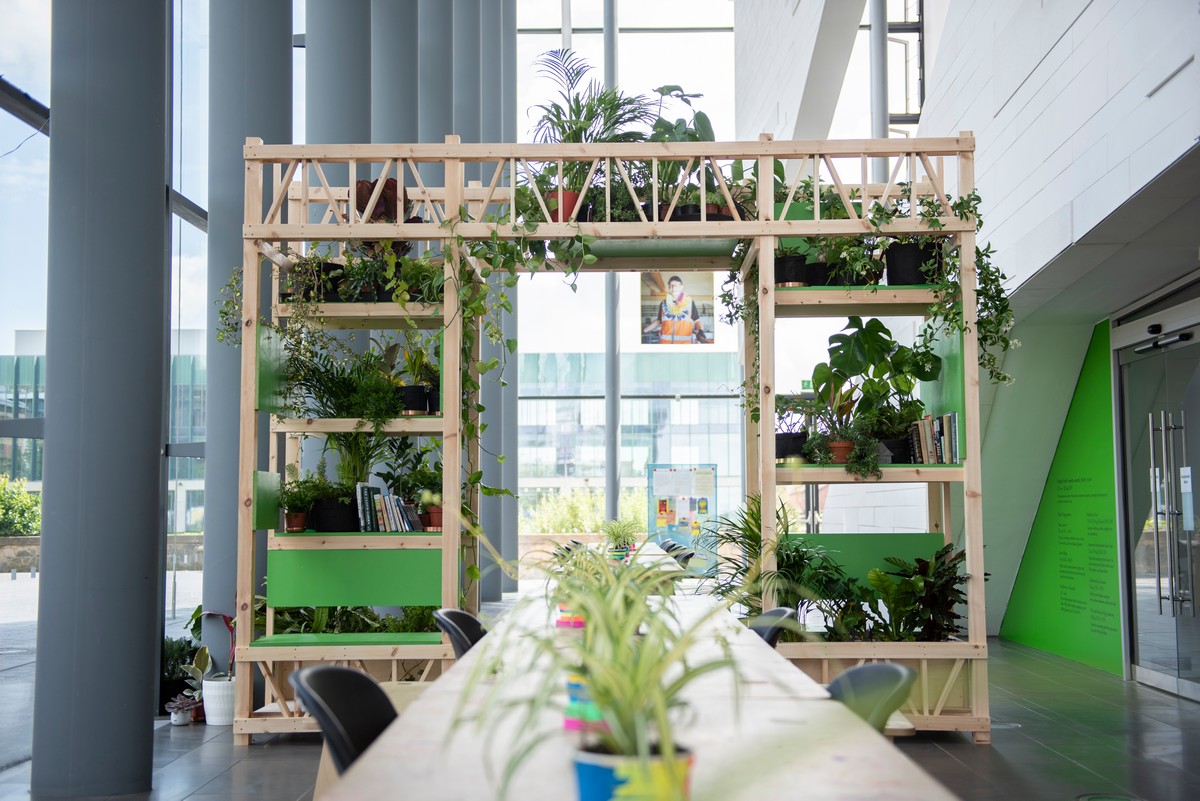 Wayward, Middlesbrough Winter Garden, 2019, Photo courtesy of MIMA, photograph by Hynes Photography
Wayward, Middlesbrough Winter Garden, 2019, Photo courtesy of MIMA, photograph by Hynes Photography
What are you working on right now?
Reopening MIMA, Middlesbrough Institute of Modern Art! I almost can’t think about this because it’s so overwhelmingly exciting. I have been longing for the day that we can welcome people to our beautiful galleries, Kitchen and Garden again – to see people interacting and to hear and smell the life breathed back into the building.
We’ll be opening with a jubilant exhibition with Sonia Boyce in which a large sculptural structure by Sonia acts as a vehicle for the work of Saelia Aparicio, Simeon Barclay, Anna Barham, Emma Bennett, Kev Howard, Lindiwe Matshikiza, Harold Offeh, Flora Parrott, Penny Payne, Alberta Whittle ad Kenizzi Yamalimbu as well as lots of works from the Middlesbrough Collection at MIMA. The structure is clad in wallpapers made by Sonia since the 90s and the exhibition also includes a newly-commissioned video that she made with skateboarders from Tees Valley-based collective Girls Skate North East and ukulele-playing skateboarders in Birmingham.
The skaters play in urban environments, using their bodies to understand space and architectural surfaces and you can see Sonia’s fascination with improvisation threading through all parts of the show and into this newest piece. The project was imagined with Eastside Projects and it’s a real gem. Last year we also managed to collect one of Sonia’s really important works: Devotional Wallpaper and Placards, 2008-2020, with support from Contemporary Art Society. This piece gathers the names of black British women involved in the music industry, proposed by many people since Sonia began the project in 2008. We’ll be showing this as part of the exhibition.
I’m also working on a big exhibition about the legacies of the production of synthetics in the Tees Valley for MIMA in Autumn of this year. It’s a complicated story with lots of tendrils into social histories, material sciences and ecological impacts. This includes new commissions with Katarina Zdjelar, Onya McCausland and Annie O’Donnell as well as lots of scientific and social history artefacts. The brilliant academic Esther Leslie is working with me as a critical thinker and advisor on the project and my colleague Lynne Hugill from the MIMA School of Art & Design is bringing lots of knowledge about new, non-toxic materials and circular economies in fashion.
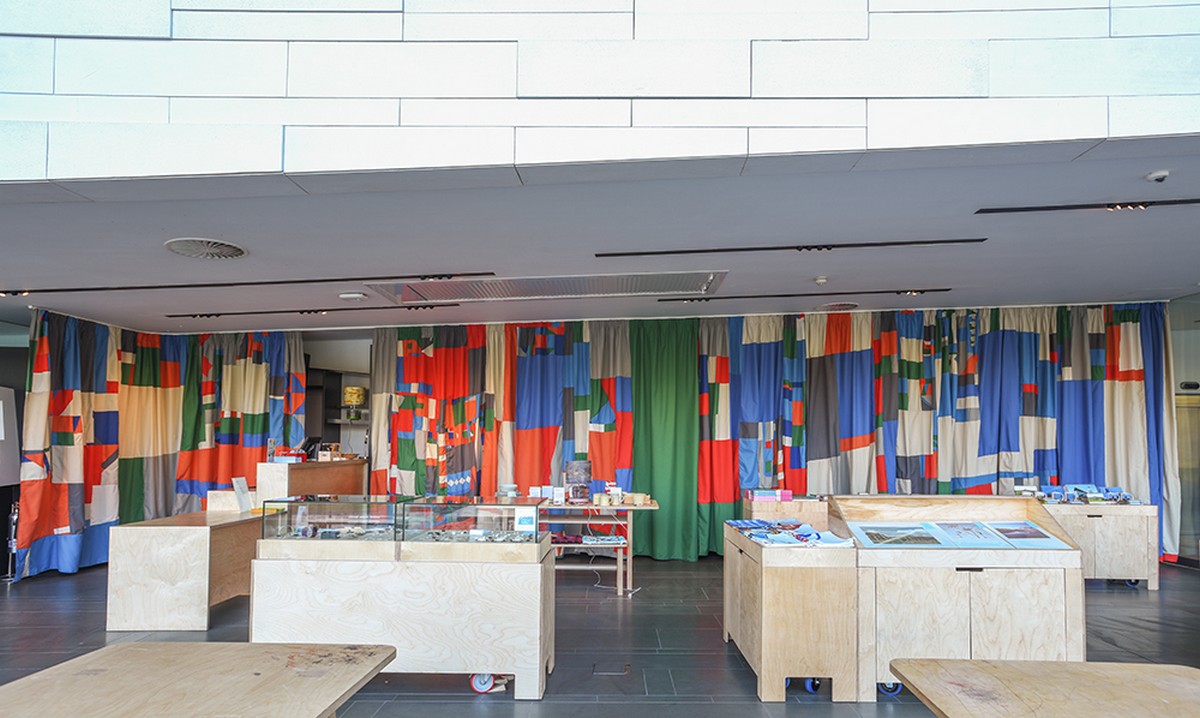 Katie Schwab, All Our Own Work, 2018, Image courtesy of MIMA, Photo Hynes Photography
Katie Schwab, All Our Own Work, 2018, Image courtesy of MIMA, Photo Hynes Photography
What are your core values and drivers that you bring to your work? What do you care about?
People. It’s always about relationships and ethics. I want to do things that are meaningful to people and that create opportunities for others.
How has this last year affected your ideas of what you want your contribution to be in future?
I don’t know if I can answer this question yet. The first three words that I wrote down are:
Inequality Ecology Division
I believe that public art institutions must create the spaces and conditions for people to come together and make new understandings of the world. They should be places for imagining and enacting social change to creatively address our perils and crises. That’s why I do what I do.
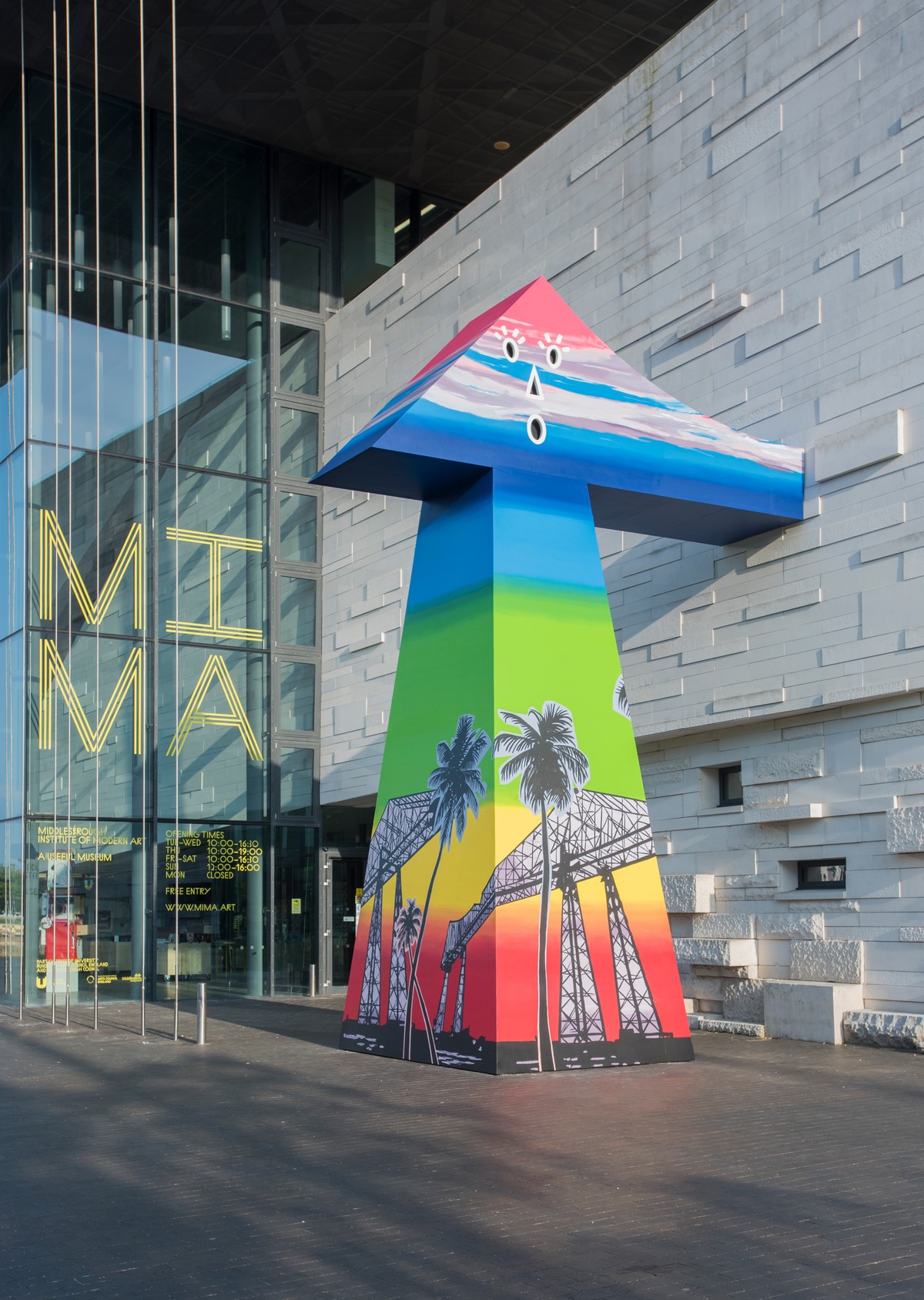 Tom O’Sullivan and Joanne Tatham, A Proposal To Ask Where Does A Threshold Begin And End, 2017, Photo courtesy of MIMA
Tom O’Sullivan and Joanne Tatham, A Proposal To Ask Where Does A Threshold Begin And End, 2017, Photo courtesy of MIMA
What do you think should change in the arts and how can we actively contribute to bringing about this change?
Oh dear… so many things need to change in the arts. And of course, connected to this, so many things need to change in society. Actually, my experience of stepping outside of gallery and museum contexts is that we are normally further down the road on discussions that other sectors and sometimes in actions too. Life in Britain would be immeasurably improved by making art a central part of every education.
The main thing I object to in the art sector is empty rhetoric – the performative political statement that signals radical change and doesn’t shift the structures. It’s easy to say things and harder to really do them over many years with many people. To genuinely address access, equity and diversity in the arts we need to be making art embedded into every school environment and making educational and training opportunities that are accessible to people from all backgrounds. We need to be looking at long-term strategies to diversify work-forces and creatives: we should have our eyes on programmes with primary schools; on employment contracts; on how budgets are spent. We need a whole systems approach and we need different people in powerful positions.
I am particularly invested in and proud of three programmes at MIMA that I believe contribute to making change:
In 2019 we worked with the inimitable research group Black Artists & Modernism to audit the Middlesbrough Collection (with works from the 1870s to today) for contributions by artists of African, Caribbean, Asian and MENA Region descent who were born in, lived, worked or studied in the UK and to undertake close readings of work. With only 2% of the collection meeting these criteria, we’re sadly in line with the other collections across the UK audited by BAM. We wanted to start with deep research and statistics from which we could set clear targets for future work and with which we could build imaginative programmes to start a process of repair through new interpretations and the support, representation, and acquisition of artists of colour. Working with Ashleigh Barice, Sonia Boyce, Anjalie Dalal-Clayton and the BAM team has enabled us to change commitments and practices within MIMA.
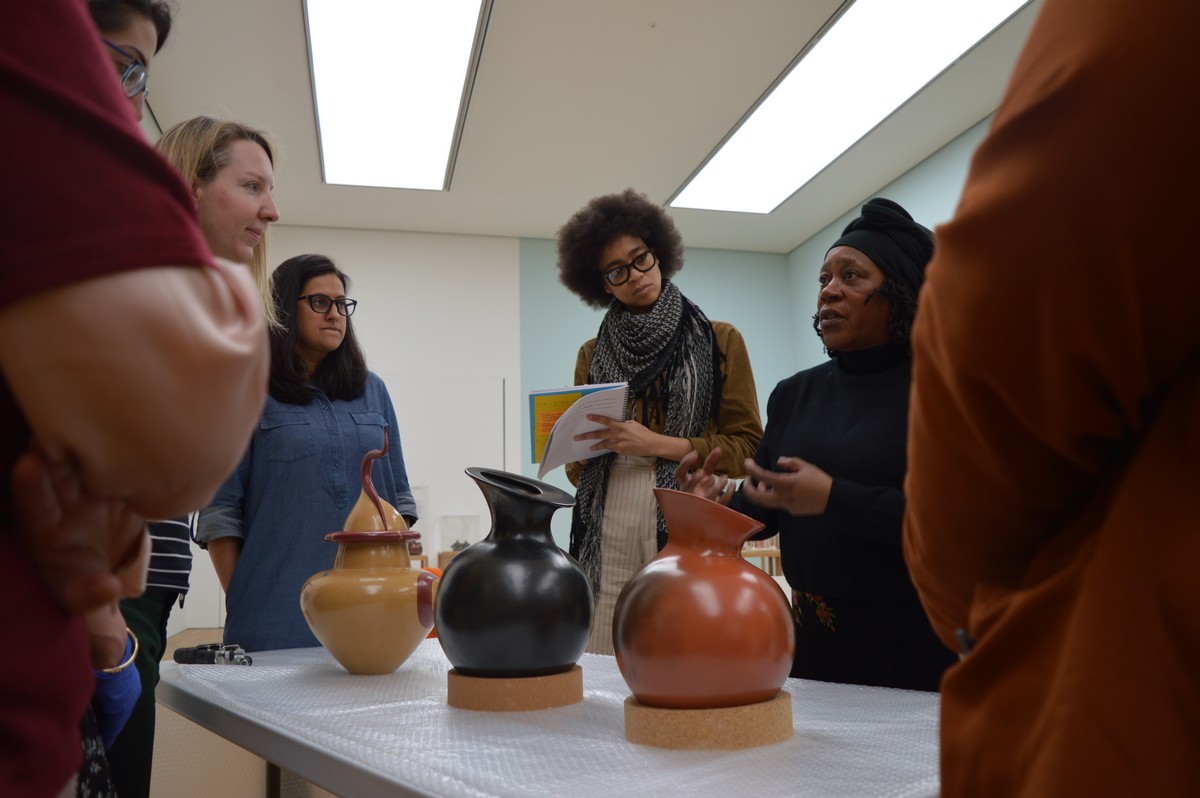 Close Reading workshop with Black Artists and Modernism, courtesy of MIMA, photograph by Kingsley Hall
Close Reading workshop with Black Artists and Modernism, courtesy of MIMA, photograph by Kingsley Hall
Our work with elders and their care-givers is really important to me. Through partnerships with social housing providers in the Tees Valley we connect artists with people living in residential care to develop creative programmes that are so joyful and that support social connectivity. Many groups have taken over the communal spaces where they live that are really well-equipped and often under-utilised by residents. The legacies of this programme have been incredible, with residents supported to set up constituted groups and gain funding to develop their own follow-on programmes.
Since 2017 we’ve worked with disability arts organisation DASH and with MAC and Wysing to develop a network of institutional support for Deaf and Disabled curators. It’s about supporting the development of creative people who haven’t had an opportunity to work on sustained projects with institutional resources and making space for their practices and voices through public programmes. It’s also about the institutions committing to anti-ableist approaches, learning and improving. The creative work that has come through this has been powerful and the learning has been intense and reciprocal. The network is about to grow and will support more disabled curators. I have loved working with others on this and found working with our associate curator Aidan Moesby incredibly insightful and valuable.
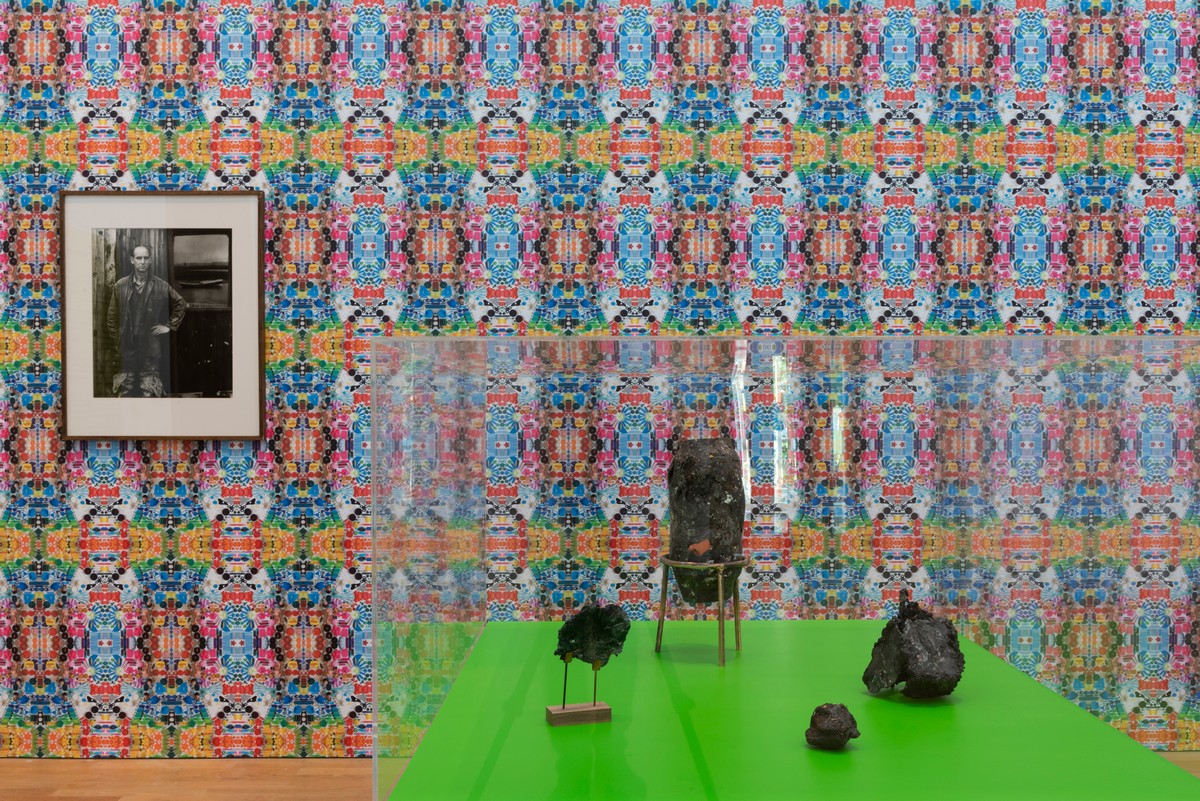 Fragile Earth, 2019, (Installation view), Image courtesy of MIMA, Photo Hynes Photography
Fragile Earth, 2019, (Installation view), Image courtesy of MIMA, Photo Hynes Photography
Do you have a favourite exhibition/project/event that you have curated and if so, what makes it particularly special to you?
I have recently been feeling the deep loss of Donna Lynas, the late Director of Wysing Arts Centre, and as such have been reflecting on my time there. We did lots of unusual (understatement!) projects there and the wildest by far was the first Wysing music festival in 2010. I arrived just in time to support Donna and artist Andy Holden to realise the very ambitious festival of artist musicians playing across three stages, two of which were artworks in their own right. It was a scale of stress I’d never felt before, but ended with the most incredible feeling of elation as people experienced Wysing’s huge and rambling site and made new connections and friendships. The festival has continued ever since, taking many different forms, and I think it’s the perfect legacy of Donna’s visionary and ever-shifting artist-centred approach to running Wysing.
Working at Eastside Projects was another incredible adventure. Being there you are immersed in creative possibilities and I love how the gallery engages artists and thinks of the city as its material. Another project that meant a lot to me was Gowlett Peaks, a fleet of foot project I set up to present a series of solo shows and events above a pub in Peckham. The pub was run by an incredible duo – artist Flora Parrot and publican Jonny Henfrey– and I loved the feel of it. Running stuff above a pub is great fun and the audiences socialised and engaged with the work in a really comfortable relaxed way. It came at a really important time when I wanted to create more space for one-on-one conversations with artists.
The book I edited with others between 2016-18 fuelled my thinking and taught me a lot. It is a tome and the process was hard but having something like this behind me, and publishing the networks and conversations that are behind my work gave me confidence in what I do. I think of MIMA as a whole project in which everything is connected including the structures that underpin the creative work, so I won’t pull threads out of the tapestry here. It has been amazing to grow with the organisation and put down deep roots here that enable a different approach to time and a deeper set of reflections on the place.
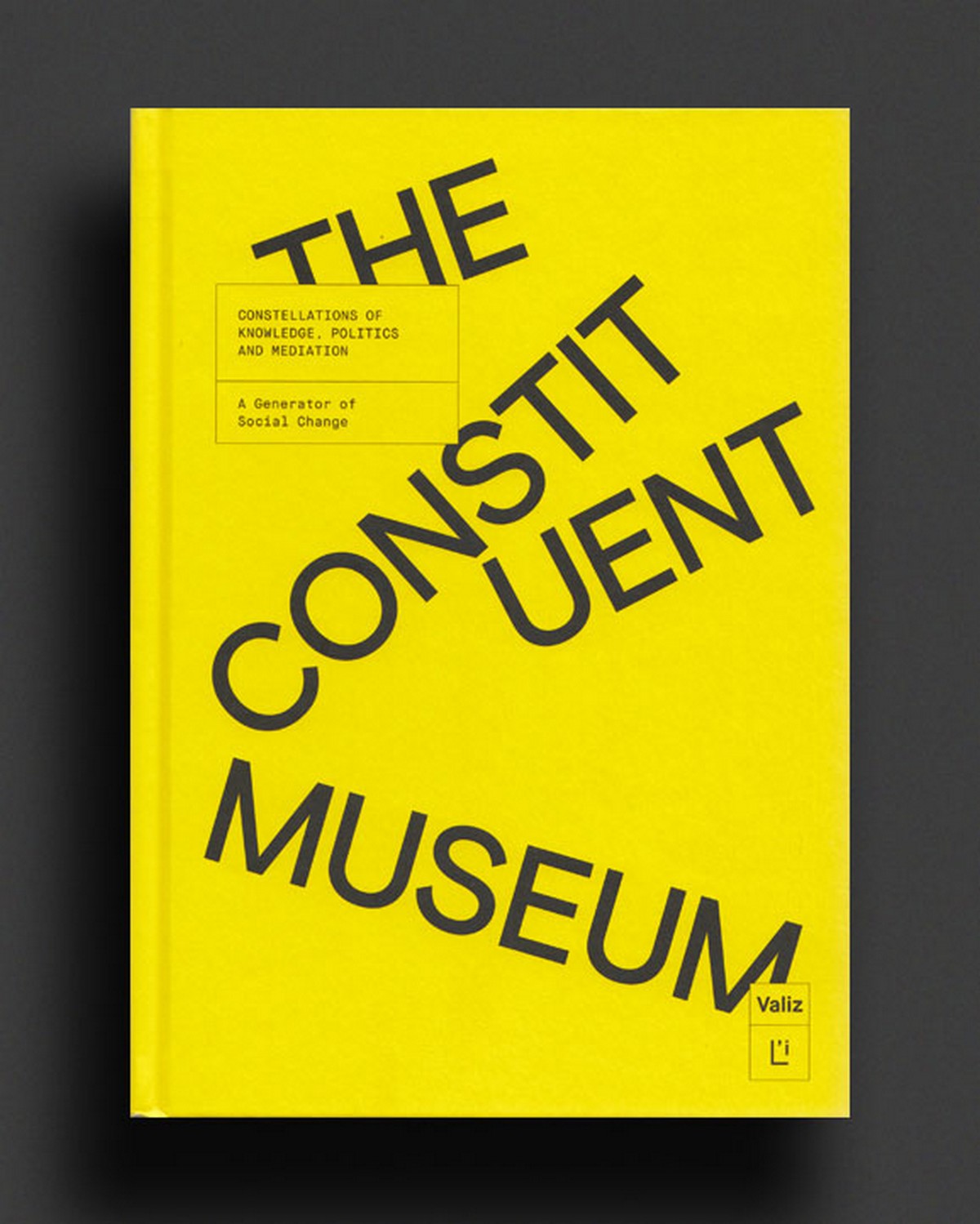 The Constituent Museum: Constellations of Knowledge, Politics and Mediation: A Generator of Social Change (Hardback),
The Constituent Museum: Constellations of Knowledge, Politics and Mediation: A Generator of Social Change (Hardback),
Authors/Editors: John Byrne, Elinor Morgan, November Paynter, Aida Sanchez de Serdio, Adela Zeleznik
What do you offer or provide artists in the curatorial or creative relationship?
The word support is huge and hard to pin down. I hope that I create structures that help people to focus and develop something – an idea, an artwork, a piece of writing, a set of relationships – differently than they have previously. I hope I create space for their ideas and methodologies to come through. I hope that I work as a connector and broker. I hope I am transparent and generous. I hope that I challenge people and ask them difficult questions. I hope that I am there for people long-term. I love working over a long period with artists and getting to know what they’re interested in and what skills they have before diving into a big project. I work in a very context-specific way so it’s really important that people have opportunities to understand MIMA’s role and responsibilities and how they might contribute before they commit to working with us.
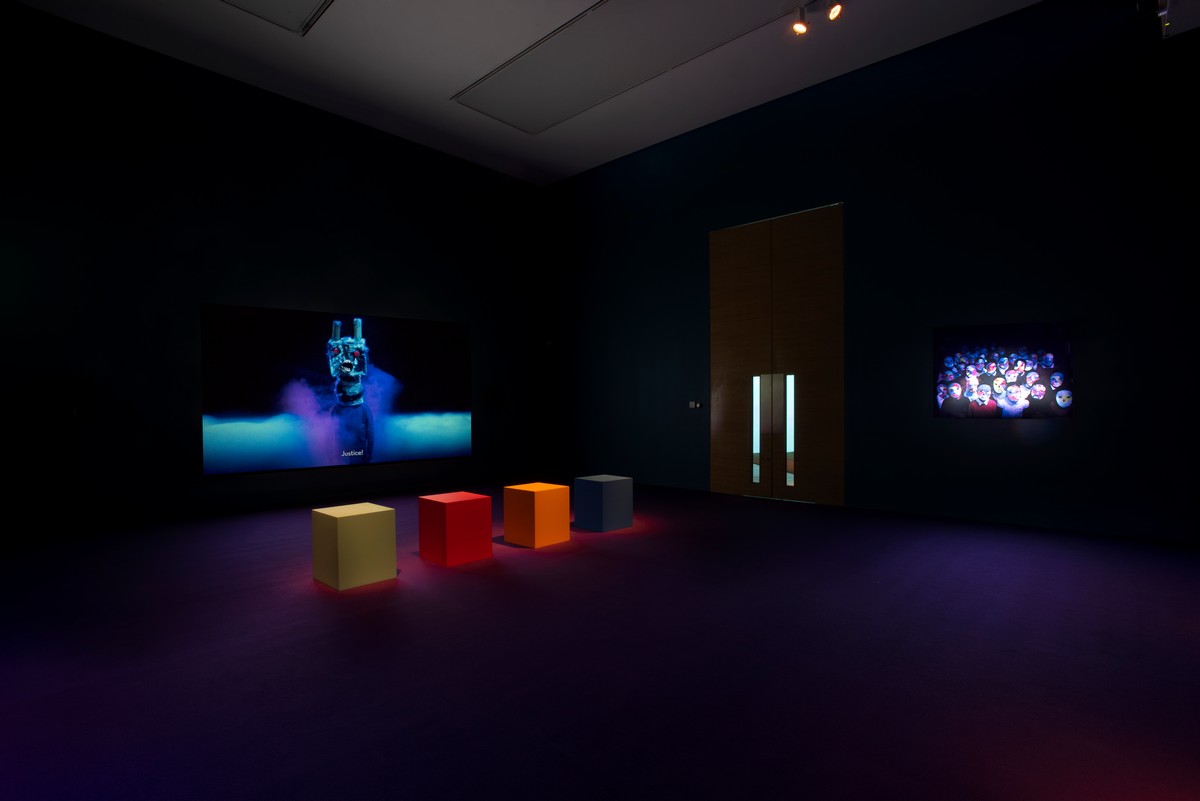 Mikhail Karikis, For Many Voices, 2020, (Installation view), Image courtesy of MIMA and the artist,Photo Hynes Photography
Mikhail Karikis, For Many Voices, 2020, (Installation view), Image courtesy of MIMA and the artist,Photo Hynes Photography
What risks have you taken in your career that perhaps did not go so well but you learnt the most from?
I have learnt everything by doing it and I’ve been really fortunate to be supported and trusted by those I have worked with. I’ve had to really stretch myself and struggle along the way. I’ve made loads of mistakes and done things in strange ways before figuring out how to do them better, and I have always tried to spend time reflecting by myself and listening to feedback from others.
It would be foolish and boring to imagine that I know what is going to happen with projects! It’s not about mapping every outcome but about setting up parameters for something to have a life beyond what I imagined possible. That’s the nature of collaboration and dialogue and striving to develop new ideas and work. My aim is to continually develop new skills to get better at supporting other people to do their best and most thoughtful work.
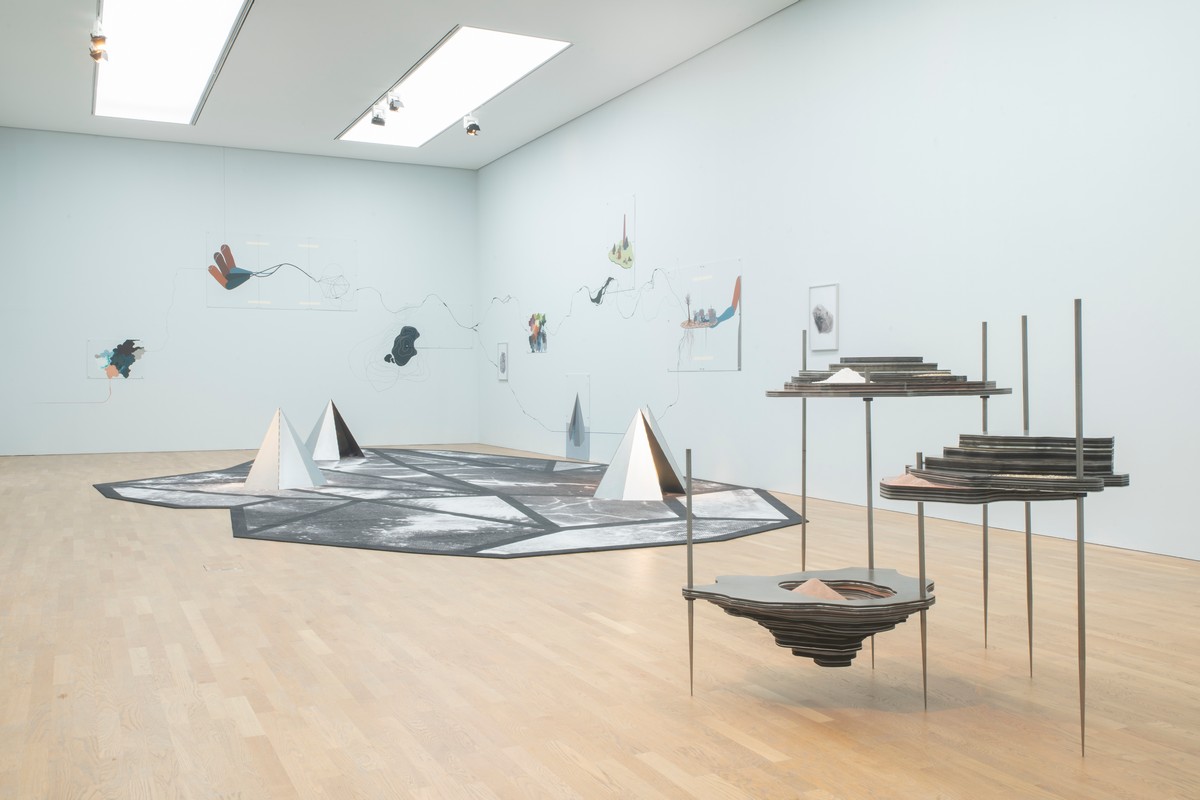 Otobong Nkanga, From Where I Stand, 2020, (Installation view), Image courtesy of MIMA, Photo Hynes Photography
Otobong Nkanga, From Where I Stand, 2020, (Installation view), Image courtesy of MIMA, Photo Hynes Photography
Who or what inspires or lifts you up?
All of the artists, designers, writers, researchers and curators with whom I have the honour of working. The team at MIMA. I learn from people every single day. Working with Otobong Nkanga recently was amazing as her work gives so many prompts for thinking about structural inequalities and ecological crisis. I love the fact that her ideas find form through intricate, beautiful making and that she uses these processes to deal with cruelty and exploitation. Her works always have a proposal or proposition at their core.
What helpful resources would you recommend to artists?
Eastside Projects’ Extra Ordinary People associateship programme offers heaps of opportunities and support. DASH’s sessions for Disabled artists and creatives are super supportive and generous. Read a whole range of interviews with artists through MIMA’s Hearing From Artists series. G39 is an ace space for artists’ development in Cardiff. A few organisations have been holding virtual studio visits for artists over the past year, including MIMA and Wysing. The Artists’ Union England and a-n offer brilliant resources and advice for artists.
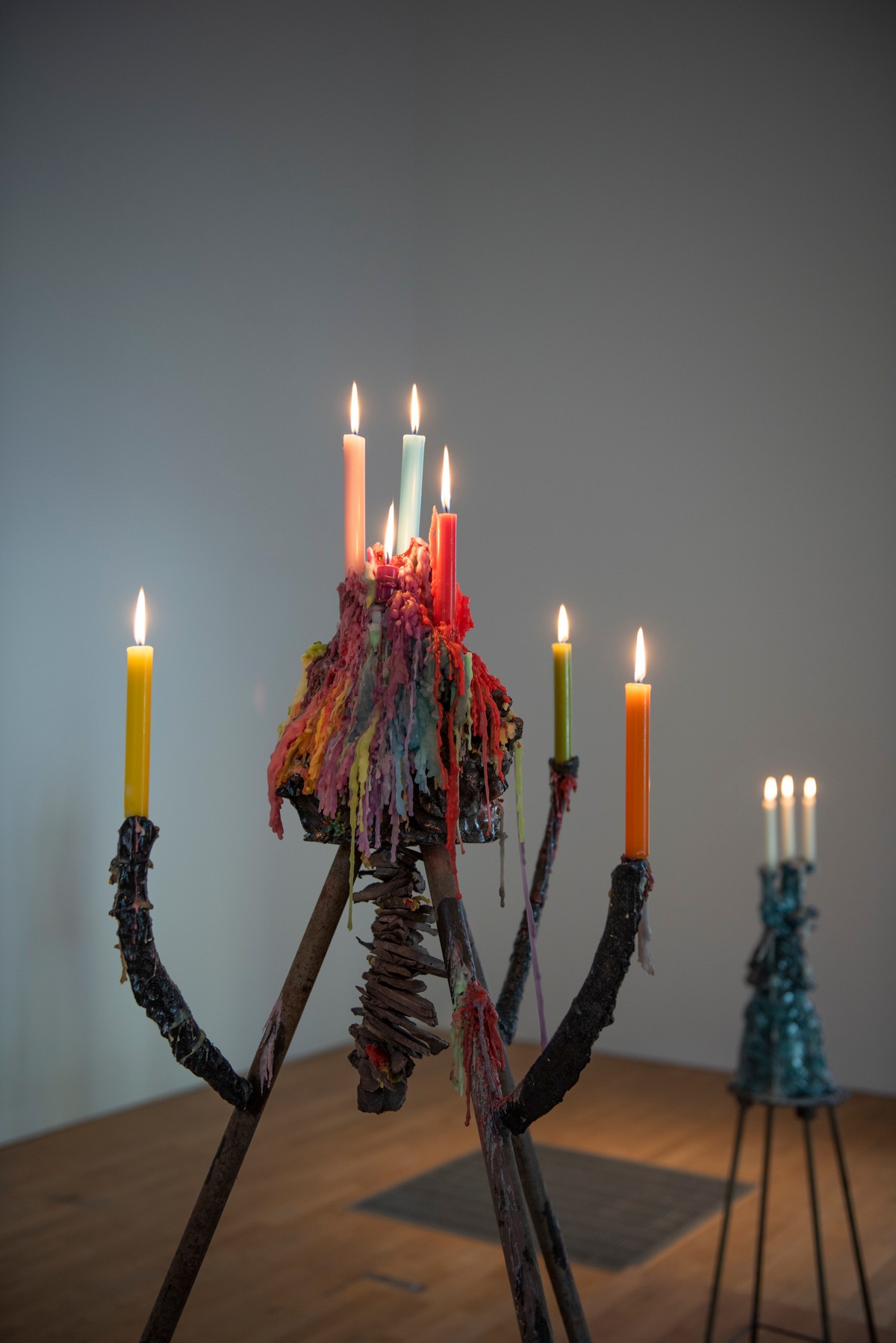 Chiara Camoni, Sisters, 2019, (Installation view), Image courtesy of MIMA, Photo Hynes Photography
Chiara Camoni, Sisters, 2019, (Installation view), Image courtesy of MIMA, Photo Hynes Photography
Do you have any advice for people wanting to work in the arts?
Everything I know, I have learned from trying things out and from listening hard to a whole range of people. My tips are:
Follow Elinor on Instagram and Twitter @elnrmrgn @mimauseful and visit https://mima.art/